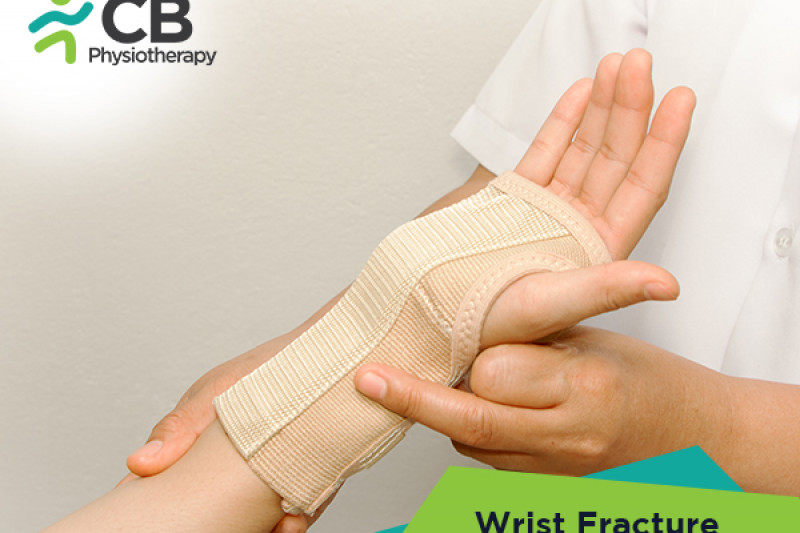
The wrist is made up of 8 small bones connected with 2 long forearm bones, radius, and ulna. A wrist fracture or broken wrist occurs when a bone is broken or cracked in one or more of these 10 bones.
Types of wrist fractures
Non-displaced: These fractures are stable fractures with breaks, in which the radius or ulna bones do not move out of place. Treated by reduction or bone-setting
Displaced: These fractures are unstable fractures with breaks and also the bones (radius or ulna) are moved out of the place. These fractures can be treated by a splint or a cast.
Unstable fractures: in these fractures, the bone pieces tend to move or shift into a bad position before they heal even after being put in a splint or a cast.
Comminuted fractures: These fractures are more severe, the bone pieces may be shattered and forced out through the skin or may affect the joint surfaces These fractures require surgery to restore and align them. These fractures have an increased risk of infection in the bone and can be stabilized by screws, plates, and external fixations.
Open fractures: When a fractured bone breaks the skin, it is called an open fracture. These fractures have an increased risk of infection in the bone.
Intra-articular fractures: These fractures extend into the wrist joint.
Extra-articular fracture: Fractures that do not extend into the joint are called extra-articular fractures.
Colles fracture: This fracture occurs due to direct impact to the palm shape of a fork facing down. The broken end of the radius tilts upward and the shape looks like a fork facing down.
Smith fracture: It occurs due to a trauma to the back of the wrist, such as falling on a bent wrist. The end of the distal radius shifts downwards toward the palm the shape looks like a wrist drop.
Wrist fracture commonly occurs due to a fall on the outstretched hand, other causes can be:
The common symptoms of wrist fracture or broken wrist are:
X-rays
X-rays help to see the broken bone and whether the broken bone is displaced or not. It also shows if there are any pieces of a broken bone.
Computed tomography scan (CT scan)
CT scans show injuries to soft tissues and blood vessels
Magnetic resonance imaging (MRI)
MRI shows detailed images of bone and soft tissues and also identify very small fracture, nerve, tendon, and ligament injuries when the wrist is broken
Medication: Ibuprofen, Acetaminophen, Opioid such as Codeine.
Note: Medication should be taken under the prescription of the doctor.
Treatment depends on the type of fracture, age, and activity level.
Immobilization
Immobilization is done to restrict the movement of a broken bone for proper healing. Splinting is done to support the wrist to provide relief from the initial pain and to align the bones in a proper position. In case of unstable fractures, a cast may be used to hold the fracture in proper alignment. For other fractures, surgery may be done to put the broken bones back together and hold them in the correct place. Pins, screws, plates, rods, or external fixation can all be used for fixing the fracture.
Treatment depends on the type of fracture, age, and activity level. After the splint or cast is removed, rehabilitation exercises or physiotherapy is started to reduce stiffness and restore movement in the wrist. Rehabilitation can help, but it can take several months or longer for complete healing. Early treatment helps minimize pain and stiffness.
The physiotherapist uses cryotherapy to help control pain or swelling in the wrist, hand, or arm.
Thermotherapy can also be used to help control pain or swelling in the wrist, hand, or arm.
Transcutaneous electrical stimulation (TENS) provides pain relief by exciting sensory nerves, it delivers small electrical impulses through electrodes that have adhesive pads to attach them to a person's skin.
Ultrasound Therapy helps to increase the blood flow to the area to reduce swelling and inflammation. It also enhances the healing of the fractured bone.
Range of motion exercises
The physiotherapist uses manual therapy to enable the joints and muscles to move more freely. Physiotherapists prescribe exercises during recovery from a wrist fracture. The physiotherapist gently moves the elbow, by passive range-of-motion" exercises. As the arm gets stronger, active range-of-motion exercises are started.
Strengthening exercises
Once the bone is healed, resistance exercises are performed using weights and also retrain the muscles to prevent re-injury.
Daily Activities
Daily activities are taught to independently perform the activities eg, dressing, cooking, buttoning a shirt, writing or working on a computer.
Demanding Activities.
Depending on the requirements of the job or the type of sports, physiotherapist designs a tailored program to meet specific demands and address the unique needs and goals.
Prevent Long-Term Disability
The physiotherapist helps to prevent long-term disability by increasing the level of fitness of the wrist and restoring full range of motion and strength safely to return safely to previous home and work activities. The therapist also recommends protective equipment, such as wrist guards while playing sports.
Recovery
After the cast is taken off or after the surgery stiffness generally lessens in the month or two and continues to improve for at least 2 years. Most patients can resume light activities, such as swimming or lower body gyming within a month or two. Vigorous activities, such as playing football and skiing, may be resumed between 3 and 6 months after the injury.
Select your City to find & connect with our experts regarding Physiotherapy for Wrist Fracture